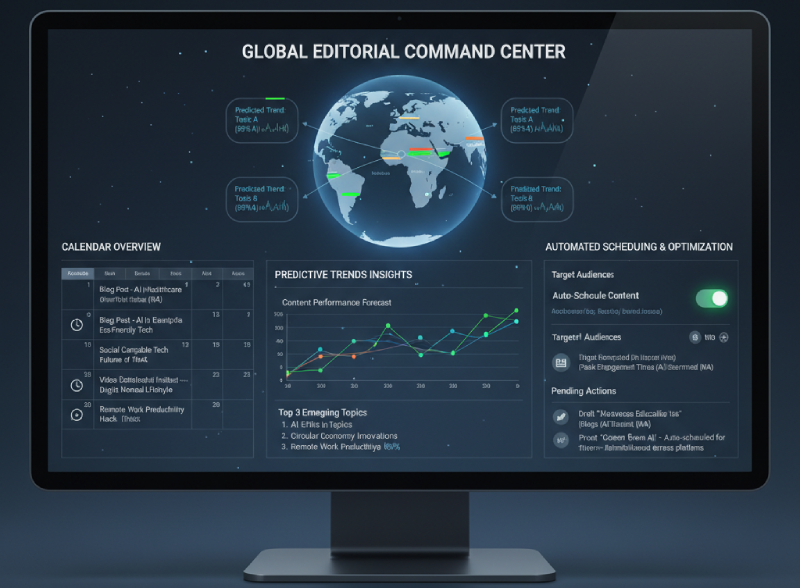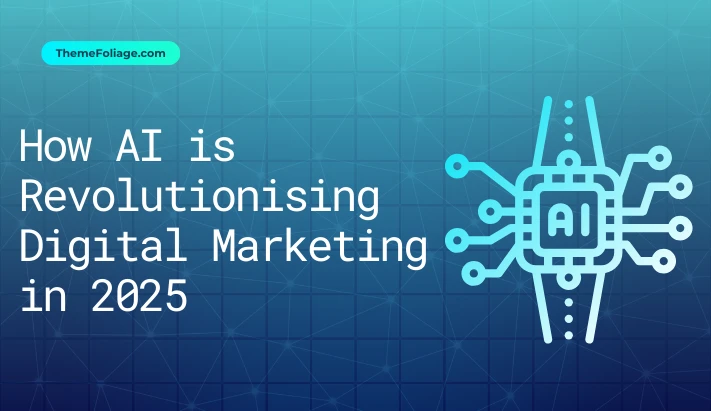A robust content calendar is the backbone of any marketing strategy, but manual planning and scheduling across blog, social and email channels can be chaotic and error-prone.
In 2025, AI transforms your editorial planning into an automated, predictive engine, suggesting topics based on trend data, scheduling posts at optimal times, coordinating assets across platforms and forecasting performance metrics so you hit every deadline and KPI without the busywork.
This guide shows you why calendar automation matters, core AI capabilities, recommended tools (note that pricing may change), a practical implementation roadmap, measurement framework and best practices to turn your content calendar into a growth lever.
Why Content Calendar Automation Matters
- Efficiency: AI replaces manual date-picking and cross-channel coordination, freeing your team to focus on creativity.
- Consistency: Automatically fills gaps, suggests posting cadences and prevents double-booking assets.
- Optimisation: Predictive analytics identify peak engagement windows per channel and topic to boost reach and interaction.
- Alignment: Synchronises blog, social, email and paid ads into one unified schedule, reducing silos and context loss.
- Scalability: As your global footprint grows, AI handles time-zone variations, localisation cues and release cadences without extra headcount.
A calendar that thinks for you is the difference between ad-hoc publishing and a strategic, measurable content machine.

Core AI Capabilities for Calendar Automation
- Trend Discovery and Topic Suggestions: AI scans search volumes, social buzz and competitor activity to propose high-impact topics and formats.
- Predictive Scheduling: Machine learning models analyse historical performance to recommend best send dates and times per channel and region.
- Cross-Channel Orchestration: Automated workflows publish blog posts, social snippets, email teasers and ad creatives in a coordinated sequence.
- Dependency Management: AI tracks asset readiness, draft status, image creation, review approvals, and adjusts publish dates dynamically.
- Performance Forecasting: Predictive models estimate metrics like clicks, shares and email opens, helping you set realistic targets.
- Localisation Aware Planning: Calendar entries include translation deadlines and region-specific metadata to support international launches.
- Automated Reminders and Escalations: AI sends notifications to contributors about upcoming tasks, uncompleted reviews or conflicts.
These capabilities let you treat your calendar as an active project manager, not just a static spreadsheet.
Recommended AI Tools for Content Calendar Automation (2025)
Note: pricing of these tools may change, it is wise to always check the pricing before you make any purchases.
| Tool | Key Functions |
|---|---|
| ClickUp AI | Topic ideation, task automation, cross-channel calendar |
| Easy-Peasy.AI | All-in-one content planning, predictive scheduling |
| Voilà AI | Collaborative calendar planning, trend insights |
| Galaxy.AI | SEO content gap detection, topic clustering |
| Predis.ai | Social media scheduling with audience engagement forecasts |
| Taskade AI | Real-time task management, content assignment |
| Musely.AI | Creative brainstorming, caption and tagline generation |
| LogicBalls | Visual calendar builder with AI-driven performance tips |
Verify pricing and API integrations before onboarding to ensure fit with your stack.
Step-by-Step Implementation Roadmap
- Audit Current Process
Map your existing calendar: channels, stakeholders, handoffs and manual tasks. Identify bottlenecks and error points. - Define Objectives and KPIs
Agree on targets, post frequency, engagement rates, content velocity, and metrics for predictive accuracy (forecast vs actual). - Select and Integrate AI Tool
Choose a platform that plugs into your CMS, social schedulers, email provider and project management systems. Configure API connections. - Import Existing Calendar Data
Migrate current plans into the AI calendar. Tag entries with metadata: content type, campaign, region, asset owner. - Configure Topic and Trend Feeds
Connect your AI tool to data sources, Google Trends, social listening, competitor sites, to surface suggested topics and timings. - Set Scheduling Rules
Define cadence guidelines per channel and region. Let AI auto-assign publish slots based on availability and performance predictions. - Automate Approval Workflows
Create review gates for drafts, creatives and translations. AI alerts stakeholders when items are overdue or require attention. - Pilot and Predict
Run a 4-week pilot. Compare AI-recommended schedules and topic picks to manual results. Adjust model parameters and content priorities. - Scale and Localise
Roll out to additional regions and languages. Leverage AI to insert localisation tasks and translate deadlines automatically. - Continuous Refinement
Monitor forecast accuracy, publish adherence and engagement lift. Retrain scheduling models and update trend sources quarterly.
Measurement and KPI Framework
- Publishing adherence rate (planned vs actual publishes)
- Forecast accuracy: predicted vs actual engagement metrics
- Content velocity: number of assets published per period
- Engagement lift: increase in clicks, shares, email opens compared to baseline
- Time saved on scheduling and coordination tasks
- Localisation throughput and on-time delivery rates
- Team satisfaction and reduction in manual conflicts
Use these metrics to prove ROI from automation and optimise configurations over time.
Best Practices
- Maintain human oversight: review AI-generated topics and adjust based on strategic priorities.
- Version control: keep an audit trail of calendar changes and approvals for compliance and post-mortems.
- Data privacy: ensure any connected analytics or trend-sources respect local data regulations.
- Access control: grant calendar permissions by role, edit, approve or view, to protect integrity.
- Model transparency: document how AI makes topic and scheduling recommendations to build team trust.
Automation accelerates planning but works best when human strategy and AI efficiency collaborate.
What potential difficulties might arise and How to Avoid Them?
- Over-reliance on AI Topics: always vet suggestions against your brand’s voice and expertise.
- Ignoring Time Zone Nuances: configure local publish windows to avoid publishing at inconvenient hours.
- Skipping Pilot Phase: validate AI recommendations with a small test before full rollout.
- Under-estimating Review Workflows: build in buffer times for translation, legal review and design.
- Neglecting Calibration: update trend data sources and retrain models to reflect seasonal or market shifts.
Proactive oversight and iterative tuning ensure your automated calendar scales without chaos.
Conclusion
AI for content calendar automation transforms your editorial schedule from a static plan into a dynamic, predictive engine that orchestrates topics, tasks and publishes across channels and regions.
By auditing your process, integrating the right tools, piloting recommendations and measuring forecast accuracy, you turn manual coordination into strategic time saved.
In 2025, the teams that lean on AI to plan, publish and predict will outpace those still wrestling with spreadsheets and siloed workflows, delivering content consistently, globally and with measurable impact.



